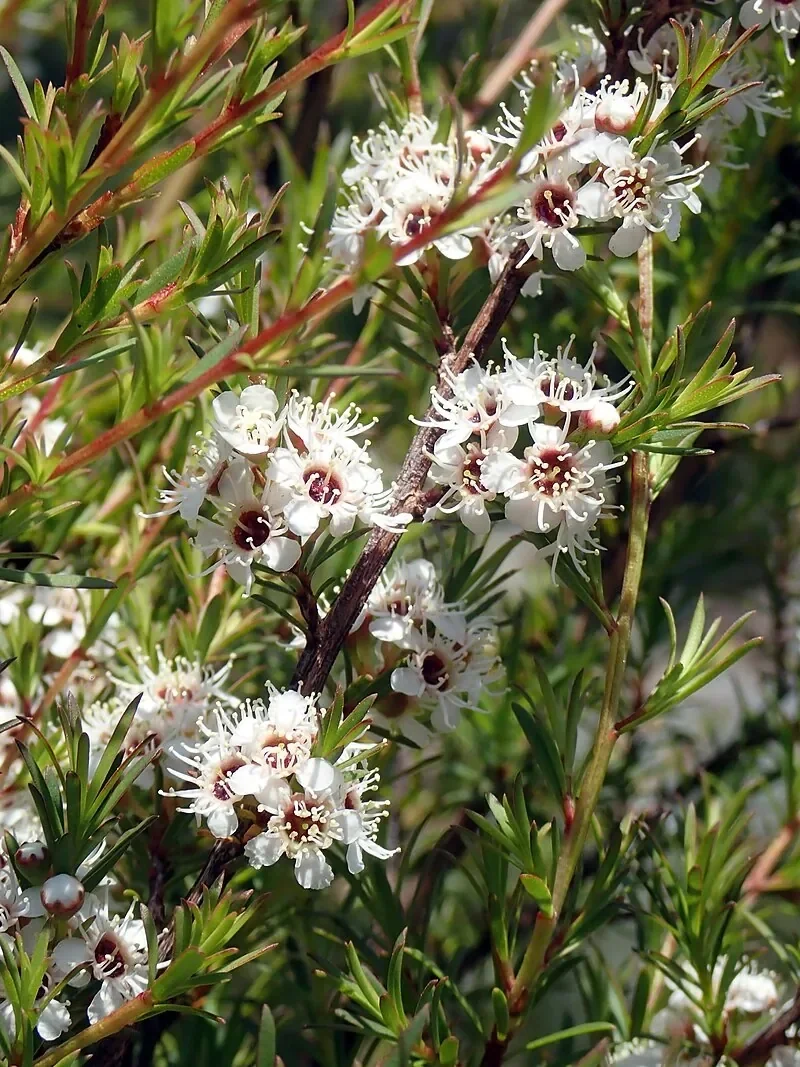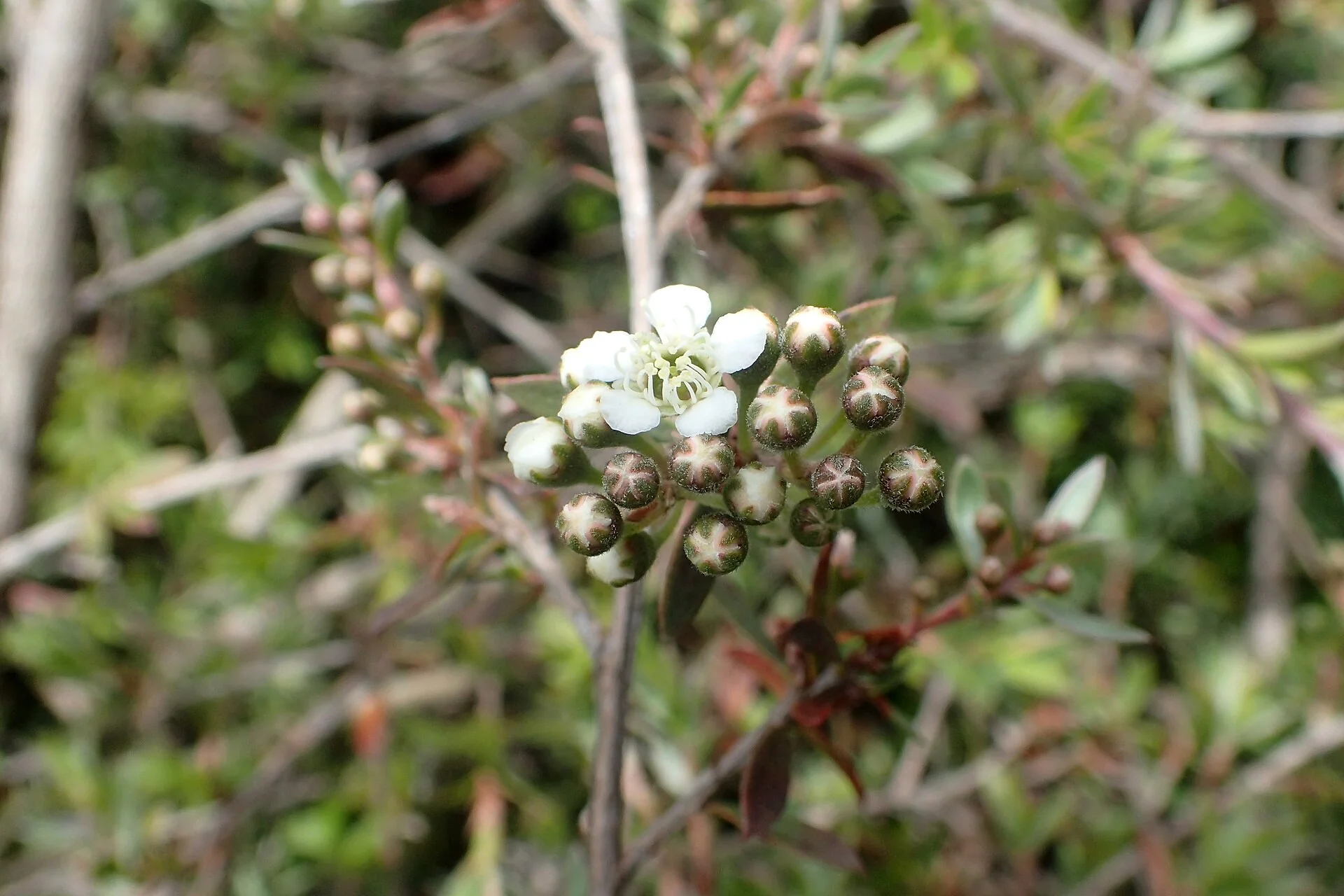
Kānuka
Kunzea ericoides
Introduction
Introduction Overview
Kānuka ( Kunzea ericoides ) is a fast-growing native New Zealand tree with small, white flowers and fine, aromatic foliage. It can grow up to 15 meters tall and is important for ecological restoration and provides habitat for native wildlife. The tree 's distinctive flowers appear in clusters and are particularly attractive to native pollinators. Kānuka is particularly well-suited to native trees collections and other coastal plants .

Plant Description
Botanical Features
Kānuka ( Kunzea ericoides ) is a distinctive native plant with unique botanical characteristics that make it well-suited to New Zealand's diverse environments. This species exhibits typical features of its genus and family, with specialized adaptations that allow it to thrive in its natural habitat. The plant 's morphological features, including its leaf structure, growth habit, and reproductive characteristics, reflect millions of years of evolution in New Zealand's isolated environment. Understanding the botanical description of Kānuka helps gardeners appreciate its unique characteristics and provides insight into its cultivation requirements and ecological role.
Quick Facts
Quick Facts Overview
| Scientific Name | Kunzea Ericoides |
|---|---|
| Height | Up to 15 m (50 ft) |
| Spread | 3-5 m |
| Water Needs | Low to moderate (drought-tolerant once established) |
| Light | Full sun to part shade |
| Frost Tolerance | High (tolerates heavy frost) |
| Salt Tolerance | Moderate (tolerates some coastal exposure) |
| Growth Rate | Fast |
| Lifespan | Many decades |
Climate Best Suited to
Kānuka thrives in temperate conditions throughout New Zealand, from coastal areas to montane regions. It tolerates temperatures from 5°C to 25°C and is very adaptable to various climatic conditions. The tree is particularly well-suited to dry, open areas and regenerating forests, where it often acts as a pioneer species.
Regional Suitability
Kānuka is found throughout New Zealand, especially in dry, open areas and regenerating forests. The tree is particularly abundant in coastal areas, scrubland, and forest margins where it plays an important role in ecological succession and habitat restoration.
| City | Suitability |
|---|---|
| Whangārei | Ideal |
| Auckland | Ideal |
| Hamilton | Ideal |
| Tauranga | Ideal |
| Rotorua | Ideal |
| Gisborne | Ideal |
| New Plymouth | Ideal |
| Napier | Ideal |
| Whanganui | Ideal |
| Palmerston North | Ideal |
| Wellington | Ideal |
| Nelson | Ideal |
| Christchurch | Ideal |
| Dunedin | Ideal |
| Invercargill | Ideal |
Natural Habitat
Natural Habitat Overview
Kunzea is naturally found in specific habitats throughout New Zealand. Understanding its natural environment helps in providing appropriate growing conditions in cultivation.
Plant Conservation
Kunzea ericoides , commonly known as kānuka, is a native tree or shrub endemic to New Zealand, though it also has a presence in Australia. It is a significant component of New Zealand's ecosystems, providing habitat and food for various native species and playing a crucial role in ecological restoration by stabilizing soil and preventing erosion. While Kunzea ericoides is generally considered widespread and not currently a threatened species, certain factors pose risks to its conservation. Threats include habitat clearance (for farmland or firewood), myrtle rust (an invasive fungus), and hybridism with other Kunzea species. A specific variety, Kunzea ericoides var. linearis , is considered "Threatened: Nationally Vulnerable" due to inbreeding, habitat loss, and use for firewood. Conservation efforts focus on preventing the spread of pests and invasive species, supporting local conservation efforts, responsible land use, and planting locally sourced forms when undertaking restoration efforts. Kānuka is a pioneer species, acting as a "nurse crop" for other plants, providing shelter for the regeneration of native woodland and forest.
Soil
Well-draining, poor to moderately fertile soils. Kānuka thrives in sandy or loamy soils with low to moderate fertility and is particularly well-suited to challenging sites where other plants may struggle. Avoid waterlogged sites as the tree requires good drainage for healthy growth.
Light
Full sun for best growth and flowering. Kānuka performs optimally in bright, open conditions where it receives plenty of light for maximum flower production and vigorous growth. The tree can tolerate some shade but will flower more abundantly in full sun.
Water
Low water needs once established. Kānuka is highly drought-tolerant and requires minimal supplemental watering once mature. Water young plants during dry periods to encourage deep root development and establishment.
Planting Guide
When to Plant
The best time to plant Kunzea ericoides is during spring or autumn when soil temperatures are moderate and rainfall is reliable. These periods provide optimal conditions for root establishment and reduce stress on the young tree.
How to Plant
Dig a hole twice the width of the root ball and slightly deeper. Place Kunzea ericoides in the hole, ensuring the root collar is at ground level, backfill with soil, and water thoroughly. Mulch around the base to retain moisture and suppress weeds. Choose a site that provides adequate space for the tree's mature size.
Ecological Role
Wildlife Interactions
Kunzea plays an important ecological role in New Zealand's native ecosystems. It provides habitat and food for native wildlife and contributes to ecosystem health and biodiversity.
Uses and Significance
Garden Uses
- Restoration and shelterbelt plantings for erosion control
- Coastal and dryland gardens where other plants may struggle
- Attracts native birds and insects with its abundant flowers
- Pioneer species for regenerating native forest ecosystems
Landscaping Uses
Landscaping Uses Overview
Kunzea is highly valued in landscaping for its aesthetic appeal and practical benefits. It can be used in various garden styles and landscape applications.
Seasonal Care
Spring
- Mulch and water regularly as new growth begins
- Monitor for flowering and pollinator activity
Summer
- Check for pests and diseases during active growth
- Ensure adequate moisture during flowering period
Autumn
- Remove dead wood and collect seeds if desired
- Prepare for winter dormancy
Winter
- Protect young trees from frost damage
- Minimal care needed during dormancy
Pruning
Pruning Techniques
Prune after flowering to maintain shape and remove dead or damaged branches. Kānuka responds well to pruning and can be shaped as needed, though its natural form is often most attractive.
Trees respond well to regular trimming. Prune after flowering to maintain shape and encourage new growth. The tree 's fast growth rate means it can recover quickly from pruning.
How to Grow Kānuka
Kānuka is a fast-growing and highly adaptable native New Zealand tree, celebrated for its small, white flowers, fine aromatic foliage, and its crucial role as a pioneer species in ecological restoration. It is a resilient plant, capable of thriving in a wide range of conditions from coastal areas to montane regions, making it an excellent choice for shelterbelts, revegetation projects, and native gardens. Understanding its propagation methods is key to successfully growing this important species.
From Seed
Propagating Kānuka from seed is a straightforward and reliable method. Collect the tiny seeds from the mature capsules in autumn when they are ripe. Sow the seeds in a well-draining seed-raising mix, lightly covering them. Kānuka seeds do not typically require stratification and germinate readily in warm conditions, usually within a few weeks to months. Maintain consistent moisture in the seed tray and provide bright, indirect light. Once seedlings have developed a few true leaves, they can be potted into individual containers and grown in a sheltered location before planting out. This method is particularly effective for large-scale restoration projects.
From Cuttings
Kānuka can also be propagated from semi-hardwood cuttings, typically taken in late summer or early autumn from healthy, current season's growth. Cuttings should be about 10-15 cm long. Remove the lower leaves and dip the cut end in a rooting hormone. Insert the cuttings into a well-draining propagation mix (e.g., sand and perlite). Keep the cuttings in a warm, humid environment, out of direct sunlight, perhaps under a plastic dome or in a propagator. Rooting typically occurs within 8-12 weeks. Once rooted, the new plants can be potted on and grown in a sheltered environment until they are ready for planting. This method is useful for maintaining specific genetic lines or for smaller-scale propagation.
Pests and Diseases
Common Pests
Kunzea ericoides is generally resistant to most pests due to its native adaptations. However, it may occasionally be affected by common garden pests such as aphids or scale insects, particularly when stressed or in poor growing conditions.
Disease Prevention
To prevent diseases, ensure good air circulation around Kunzea ericoides and avoid overwatering. Remove any diseased plant material promptly to prevent spread. The tree 's natural hardiness and adaptation to New Zealand conditions help it resist most disease problems.
Cultural Significance
Kunzea ericoides , commonly known as Kānuka, holds significant cultural importance, particularly among Māori communities in New Zealand, and has a variety of traditional and modern uses.
Māori Traditional Uses:
- Kānuka was highly valued by Māori for its extensive medicinal properties and was incorporated into rituals and healing practices. Traditionally, young shoots were chewed or a drink made from seed capsules was consumed to treat dysentery and diarrhea. A liquid derived from boiling the bark was used as a sedative, to reduce fever, and to alleviate constipation, sore eyes, colic, inflamed breasts, scalds, and burns. The white gum from the plant was applied to scalds and burns and ingested to relieve coughing. Pounded seed capsules were used to create poultices for running sores, and leaves were utilized in vapor baths. Decoctions from the plant were taken for urinary and other internal complaints, and as a febrifuge. The bark, when boiled, provided a remedy for diarrhea and dysentery, and boiled leaves and bark were applied externally for various pains, including stiff backs. Kānuka oil was also recognized for its anti-worm, anti-bacterial, and insecticidal properties.
Other Traditional and Historical Uses:
- The name "tea-tree" originated from early bushmen and Captain Cook, who brewed a tea-like drink from Kānuka leaves. Its hard, slow-burning wood was a popular choice for firewood and was also used for constructing wharf piles and tool handles. Māori and early settlers crafted various tools and implements from Kānuka wood, including adzes, beaters, paddles, weapons, clubs, spades, and marine piles. Long, sharpened Kānuka poles were specifically used in the construction of eel weirs. The fragrant leaves were also used to scent oils.
Modern Significance:
- In contemporary times, Kānuka continues to be valued. Kānuka oil is increasingly popular in aromatherapy and skincare for its therapeutic benefits. The flowers are a significant source of nectar for honeybees, producing a distinctive honey known for its strong taste and reputed antibacterial qualities. Research has indicated that Kānuka oil possesses antimicrobial activity against viruses like Herpes simplex and various fungi, leading to its use in topical preparations for conditions such as athlete's foot and candida. Beyond its practical applications, Kānuka is also appreciated as an ornamental tree in New Zealand and Australia and plays a crucial role as a pioneer and nurse plant in forest regeneration.
Bonus Tip
Nature's Pioneer
Kānuka is a remarkable pioneer species, often the first plant to colonize disturbed or cleared land. It grows quickly, forming dense stands that provide shelter and improve soil conditions, acting as a 'nurse crop' for slower-growing, more sensitive native species. This allows other native trees and shrubs to establish and eventually grow through the kānuka canopy, leading to the regeneration of diverse native forests.







